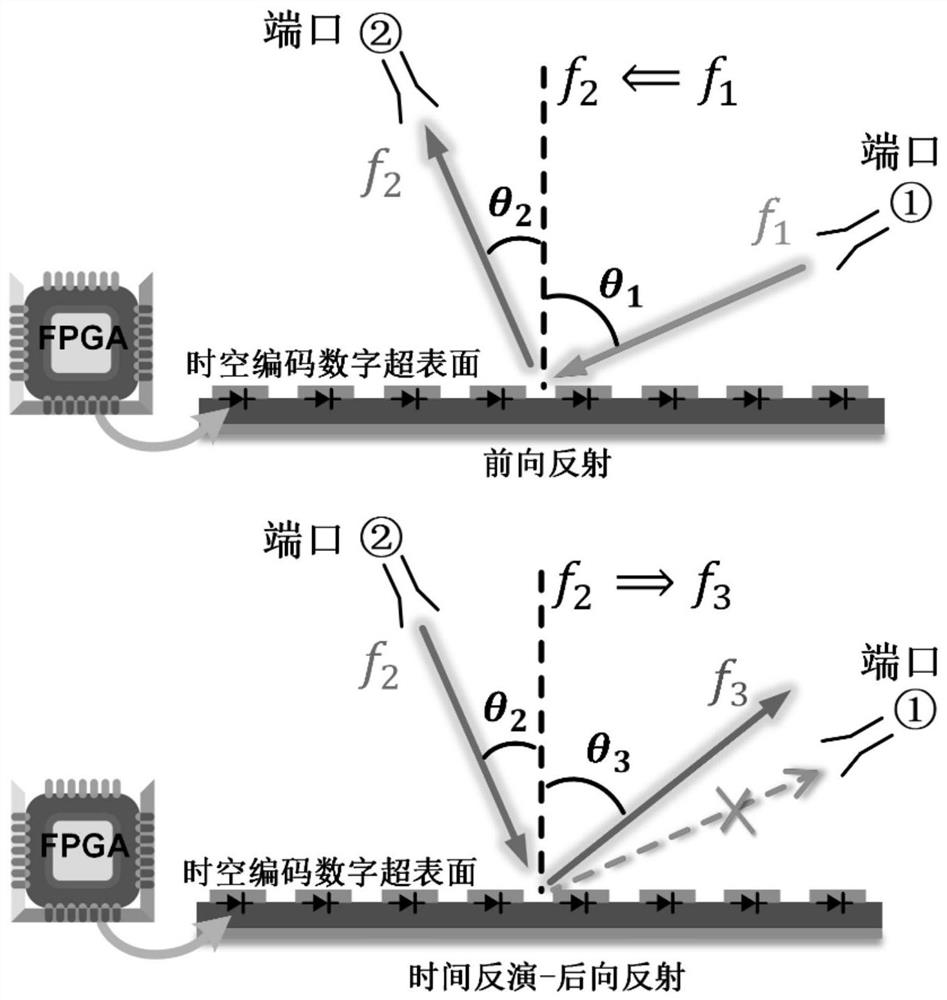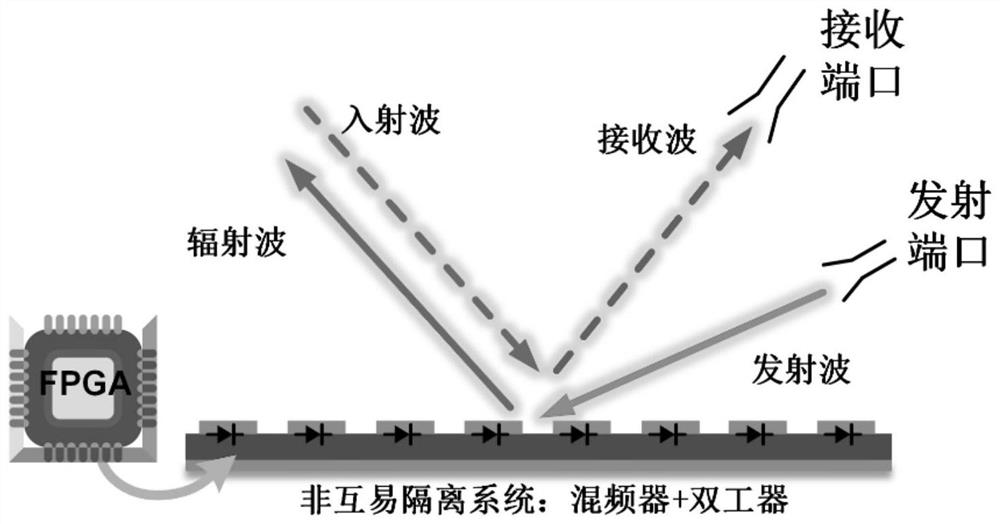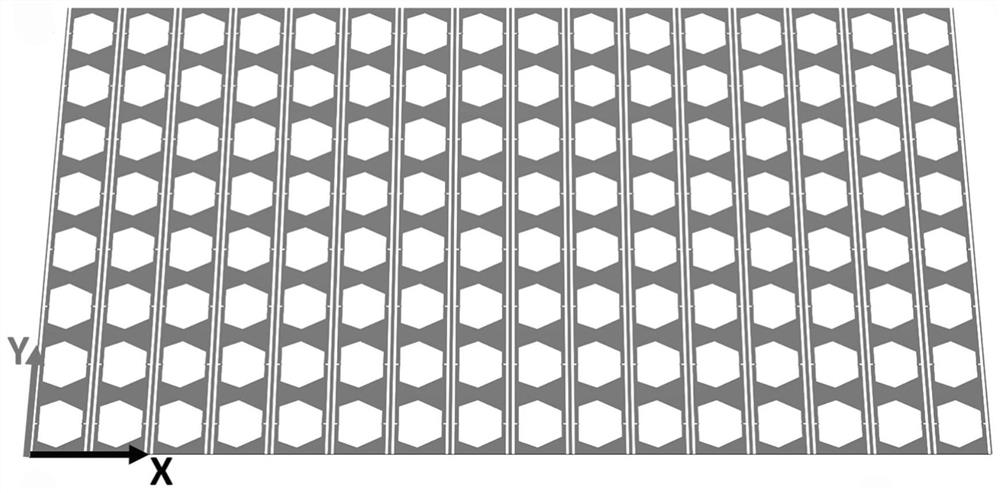Programmable non-reciprocal transmission and frequency conversion system based on space-time coding metasurface
A technology of space-time coding and frequency conversion, applied in the field of programmable non-reciprocal transmission and frequency conversion systems, can solve the problems of large size, inconvenient expansion, and difficult integration of non-reciprocal devices and frequency converters, and achieves easy experimental processing, The effect of low price and large degrees of freedom
- Summary
- Abstract
- Description
- Claims
- Application Information
AI Technical Summary
Problems solved by technology
Method used
Image
Examples
Embodiment 1
[0036] Taking reflection as an example, image 3 It is a structural schematic diagram of the space-time encoding metasurface used in this system. The metasurface is composed of 16×8 2-bit reflective programmable units, and each column of 8 units shares the same control voltage. Each unit contains 2 diodes, and different switch combinations constitute the 2-bit reflected phase of the unit, namely 0 degrees, 90 degrees, 180 degrees, 270 degrees, marked as numbers "0", "1", "2" and " 3". for image 3 In the given example, the cycle length of the programmable unit is half of the working wavelength of the incident wave.
Embodiment 2
[0038] Figure 4 It is a space-time coding matrix arrangement used to realize non-reciprocal reflection and +1-order harmonic frequency conversion. The coding sequence of 16 units in space presents a gradient change from right to left, and the coding sequence of length 4 is used in time. Sequences, also exhibit gradient-increasing transformations. Figure 5 is the equivalent amplitude and phase distribution of the space-time encoding matrix at different harmonics, which can be obtained from the coefficients of the Fourier series of the periodic signal in the time domain. can be seen in Figure 4 Under the modulation of this time gradient encoding, the metasurface mainly converts the energy of the incident electromagnetic wave to the +1 order harmonic frequency, the amplitude exceeds 0.9, and there is a gradient equivalent phase distribution in the +1 order harmonic, which can be used It is used to control the emission direction of the +1 order harmonic. Figure 6 yes Figu...
Embodiment 3
[0041] Figure 9 It is a space-time coding matrix arrangement used to realize non-reciprocal reflection and +2-order harmonic frequency conversion. The coding sequence of 16 units in space presents a gradient change from right to left, and the coding sequence of length 10 is used in time The sequence also exhibits a certain nonlinear gradient increase. The encoding is based on an algorithm optimization to efficiently convert the incident wave frequency to the +2nd harmonic frequency. Figure 10 is the equivalent amplitude and phase distribution of the space-time encoding matrix at different harmonics, which can be obtained from the coefficients of the Fourier series of the periodic signal in the time domain. can be seen in Figure 9 Under the modulation of this time gradient encoding, the metasurface mainly converts the energy of the incident electromagnetic wave to the +2-order harmonic frequency, with an amplitude of about 0.84, and there is a gradient equivalent phase dis...
PUM
 Login to View More
Login to View More Abstract
Description
Claims
Application Information
 Login to View More
Login to View More - R&D
- Intellectual Property
- Life Sciences
- Materials
- Tech Scout
- Unparalleled Data Quality
- Higher Quality Content
- 60% Fewer Hallucinations
Browse by: Latest US Patents, China's latest patents, Technical Efficacy Thesaurus, Application Domain, Technology Topic, Popular Technical Reports.
© 2025 PatSnap. All rights reserved.Legal|Privacy policy|Modern Slavery Act Transparency Statement|Sitemap|About US| Contact US: help@patsnap.com



